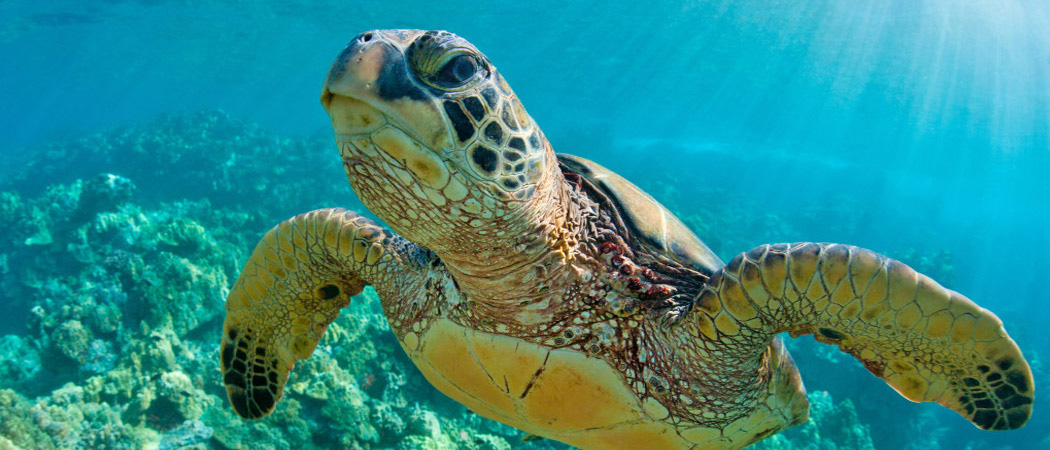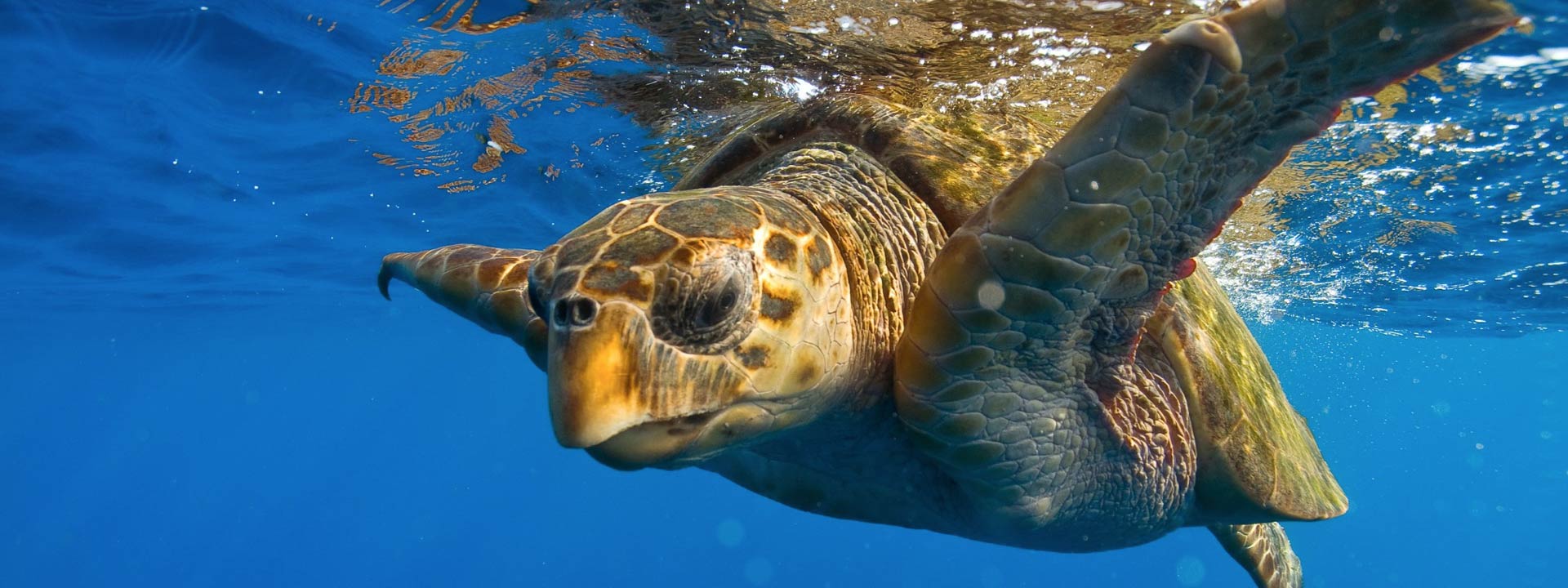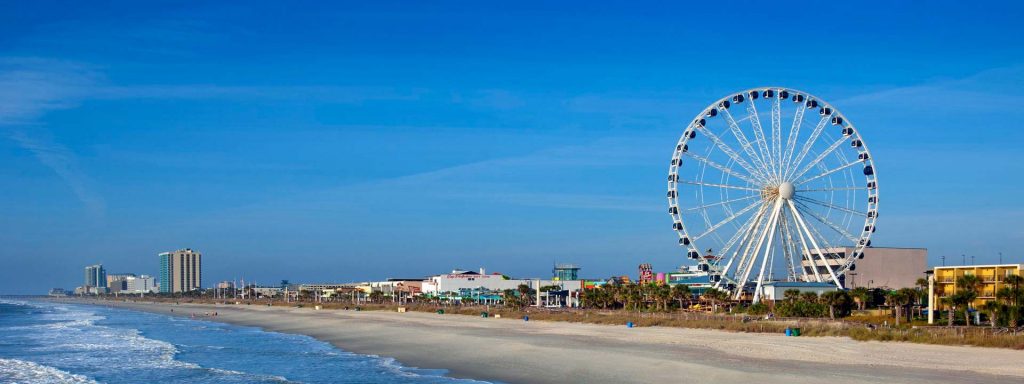12 Fun Facts About Loggerhead Sea Turtles Near Myrtle Beach
The loggerhead sea turtles are the revered official state reptiles of South Carolina. They’re also endangered, so we’d love to keep them nesting, hatching and crawling to our shoreline each year for generations to come.

Sea turtles in Myrtle Beach nest over the summer (May through August), a season that’s also crawling with tourists on the sand, which is why they’re protected under the Federal Endangered Species Act of 1973 and the Marine Turtle Protection Act.
SCUTE, or the South Carolina United Turtle Enthusiasts, joins together each season to volunteer to protect our Myrtle Beach turtles by protecting nests, relocating the nests if needed and record turtle births and deaths. SCUTE records an average 100-plus turtle nests with more than 12,000 eggs laid on the beaches of Horry and Georgetown counties each season, with about 70 percent of the eggs actually hatching. Since the 1990s, the group has also worked to increase survival by controlling and shade beachfront lighting (outdoor house lights and flashlights), which disorients nesting mama turtles and her hatchlings on their crawling path toward the ocean’s surf.

What can you do to help protect our loggerhead sea turtles while you’re here in Myrtle Beach?
- If you see a sea turtle nest on the beach, don’t touch it or disturb it. Volunteers may have already roped it off. It puts the eggs at risk – and you could be at risk for being fined because sea turtles are state and federally protected.
- If you see a female sea turtle swimming onto shore keep your distance because if she feels threatened she won’t land on the beach and lay her eggs.
- If you’re staying at a Myrtle Beach oceanfront condo, turn off all beachfront lights after 10 p.m., don’t use flash photography on your phone or camera and don’t use flashlights.
- If you dug a hole in the sand during your beach time, fill it in before you leave your spot on the sand. Holes can trap baby hatchlings when they crawl from the nest to the ocean.
- And if you take a cooler with food and bags, throw it all away before you leave. Sea turtles mistake plastic bags for food. We humans don’t much care for your litter either.
Want to learn more about our state reptile? Here are some fun facts to keep in mind if you spot a sea turtle (or even if you don’t) while you’re on our beaches:
- Female turtles spend less than two hours on the beach and return to the ocean without revisiting the nest. Sea turtles never come on land for any other reason, unless sick or injured.
- Female loggerhead turtles travel thousands of miles to return to the beach where she hatched as a baby. Once she does, she will lay about 100 eggs in a nest, usually at night, that hatch in 45 to 65 days.
- She will nest every two to three years, laying eggs four times a season.
- When hatched, baby turtles (each about 2 inches long) take the natal trip to their ocean home. Only 1 in 1,000 survive to reach sexual maturity at age 20-25.
- As the colorful loggerhead sea turtles grow, they take on their namesake oversized head that looks like a big log. These heads are anchored by a powerful jaw that can crush food like conchs, horseshoe crabs and hard shell animals. They also grub on softer invertebrates, like jellyfish.
- The average weight of a loggerhead sea turtle is 253 pounds; length is 3 feet; lifespan is 50+ years.
- Today, there are more loggerhead sea turtles swimming (at an approximate speed of 15 mph) in United States waters more than any other sea turtle species.
Visit Myrtle Beach

Just like the turtles, we hope you come back to Myrtle Beach year after year. You might get lucky enough to see one of these lovely creatures. Book your room at one of our luxury Myrtle Beach resorts to get the best selection at the best prices.




